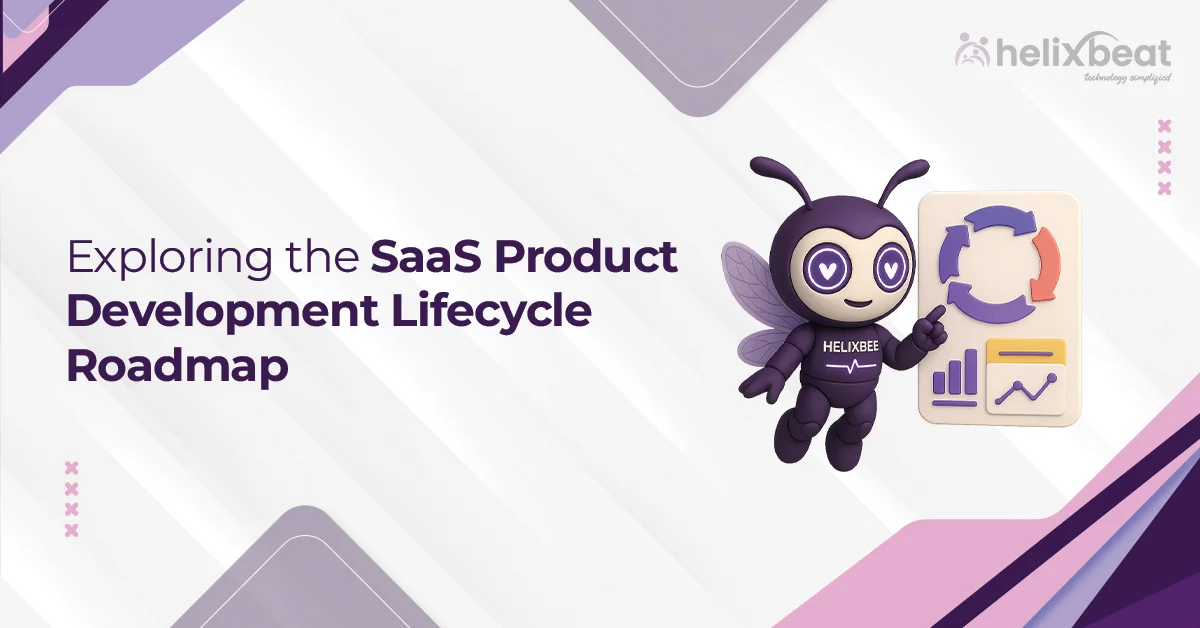“You can’t manage what you don’t measure.” — Peter Drucker.
This quote expresses a key idea for any business, especially in e-commerce. You must know what works and what doesn’t to grow and improve. It’s essential to measure your
e-commerce agency’s success to make informed decisions and optimize your strategies. Doing this helps you make better decisions, improve your strategies, and reach your business goals.
In 2021, over 2.14 billion people shopped online, ‘Statista’ highlighting the rapid growth of e-commerce. This expansion creates both significant opportunities and challenges. E-commerce agencies help businesses navigate this landscape by creating strategies to increase traffic, enhance conversions, and improve customer loyalty. However, assessing their effectiveness can be difficult without a clear measurement framework.

Table of Contents
What’s an E-commerce Metric?
Collaborating with an ecommerce agency requires a thorough comprehension of e-commerce metrics, which is essential for assessing and improving your online business’s performance. An e-commerce metric is a quantifiable figure that reflects various elements of your online store’s functionality and success.
These metrics serve as crucial indicators of your digital shop, offering valuable insights into customer behavior, the effectiveness of marketing efforts, and sales outcomes. Standard e-commerce metrics monitor a diverse array of data, including:
- Website Traffic: How many visitors come to your site?
- Conversion Rate: The percentage of visitors who complete a purchase.
- Average Order Value (AOV): How much customers spend per transaction.
- Cart Abandonment Rate: The percentage of shoppers who add items to their cart but leave without buying.
E-commerce Performance Overview
(Note: Please create an infographic based on the table given below)
| Metric | What It Measures | Why It Matters |
| Conversion Rate | % of visitors who make a purchase | Indicates website effectiveness |
| Average Order Value | Average amount spent per purchase | Helps increase revenue per sale |
| Cart Abandonment Rate | % of abandoned shopping carts | Identifies checkout issues |
| Traffic Sources | Where visitors are coming from | Guides marketing investments |
Difference Between an E-commerce Metric & an E-commerce KPI
Knowing the difference helps your e-commerce agency focus on the data that truly impacts growth, using an e-commerce KPI dashboard for clear and concise reporting.
| Aspect | E-commerce Metric | E-commerce KPI (Key Performance Indicator) |
| Definition | Any measurable data point that provides insight into online store operations. | The most critical metrics are directly tied to business goals and overall success. |
| Examples | Total website visits, bounce rate, page views. | Conversion rate, customer lifetime value, average order value. |
| Purpose | Helps understand various aspects of store performance. | Guides strategic decisions and measures achievement of key business objectives. |
| Usage in Reporting | Provides broad data for analysis and monitoring. | Focuses on key data that impacts growth and profitability. |
| Role for E-commerce Agency | Helps track operational performance and website health. | Helps agency prioritize efforts that drive business growth and ROI. |
| Tools | Tracked through analytics platforms for general insights. | Used in e-commerce KPI dashboards for focused, actionable reporting. |
Why are Tracking E-commerce Metrics and KPIs Important?
Monitoring e-commerce metrics and key performance indicators (KPIs) goes beyond just analyzing data. It is essential for understanding the true performance of your online store and the effectiveness of your agency’s efforts. Here are some key reasons why tracking these metrics is crucial:
- Measures Real Impact
- Shows if marketing strategies lead to actual sales growth.
- Helps track improvements in customer retention and engagement.
- Identifies Growth Opportunities
- Reveals where customers drop off, such as during checkout.
- Highlights areas to increase average order value.
- Improves Decision-Making
- Guides where to allocate your marketing budget effectively.
- Helps focus campaigns on what drives the best results.
- Enhances Accountability
- Creates clear benchmarks to evaluate agency performance.
- Builds transparency in your partnership with the agency.
- Adapts to Market Changes Quickly
- Detects shifts in customer behavior early.
- Enables timely strategy adjustments to stay competitive.
- Supports Long-Term Strategy
- Provides data to refine and improve tactics over time.
- Helps build a sustainable growth plan based on results.
(CTA: Partner with Helixbeat to unlock data-driven growth and maximize your e-commerce success.)
15 Key E-commerce Metrics to Track and How to Improve Them
Tracking the right e-commerce metrics is essential to evaluate your online store’s health and the effectiveness of your e-commerce or e-commerce digital marketing agency. Below are 15 critical e-commerce metrics, what they measure, how to calculate them, and tips to improve each.
(Note: Please create an infographic on the formulas written below each metric and place it accordingly) Here is the reference below:
1. Conversion Rate
- The percentage of website visitors who complete a desired action, usually making a purchase.
- It reflects how well your website turns visitors into customers.
- How to improve: Simplify navigation, optimize product pages, improve site speed, and use targeted promotions to improve it.
- Formula
Conversion Rate= (Total Visitors /Number of Purchases) ×100
2. Average Order Value (AOV)
- The average amount spent by customers per transaction.
- Increasing AOV boosts revenue without needing more visitors.
- How to improve: Use upselling, cross-selling, and product bundles.
- Formula
AOV= Number of Orders/ Total Revenue
3. Customer Acquisition Cost (CAC)
- The average cost of acquiring a new customer.
- It helps assess the efficiency of marketing spend.
- How to improve: Optimize ad targeting and improve conversion funnels.
- Formula
CAC= Number of New Customers Acquired/ Total Marketing Spend
4. Customer Lifetime Value (CLV)
- Total expected revenue from a customer over their relationship with your store.
- Guides on how much to invest in acquisition and retention.
- How to improve: Boost loyalty programs and personalized marketing.
- Formula
CLV= Average Order Value × Purchase Frequency × Customer Lifespan
5. Cart Abandonment Rate
- Percentage of shoppers who add products to their cart but don’t complete the purchase.
- High rates indicate potential checkout friction.
- How to improve: Simplify checkout, offer guest checkout, and send cart reminders.
- Formula
Cart Abandonment Rate= (Number of Abandoned Carts/ Number of Shopping Carts Created) ×100
6. Return on Advertising Spend (ROAS)
- What it measures: Revenue generated for every dollar spent on advertising.
- Why it matters: Indicates advertising efficiency and profitability.
- How to improve: Optimize ad creatives and focus on high-converting channels.
- Formula
ROAS= Revenue from Ads/ Cost of Ads
7. Traffic Sources
- Breakdown of where your website visitors come from (organic, paid, referral, social).
- Helps allocate marketing budget effectively.
- How to improve: Invest in SEO, content marketing, and social campaigns.
8. Bounce Rate
- Percentage of visitors who leave after viewing only one page.
- High bounce can indicate poor user experience or irrelevant traffic.
- How to improve: Improve page load speed and content relevance.
- Formula
Bounce Rate= (Visitors who view one page/ Total Visitors) ×100
9. Customer Retention Rate
- Percentage of customers who return to make another purchase.
- Retaining customers is often cheaper than acquiring new ones.
- How to improve: Offer loyalty programs and personalized follow-ups.
- Formula
Retention Rate= (Number of Customers at End of Period−New Customers During Period / Customers at Start of Period) ×100
10. Net Promoter Score (NPS)
- Measures customer satisfaction and likelihood to recommend your store.
- Indicates brand loyalty and customer advocacy.
- How to improve: Improve customer service and address feedback.
- Formula
- NPS is calculated via surveys asking: “On a scale of 0-10, how likely are you to recommend us?”
NPS=%Promoters−%Detractors
11. Email Open Rate
- Percentage of recipients who open your marketing emails.
- Reflects the effectiveness of subject lines and sender reputation.
- How to improve: Use personalized subject lines and segment your lists.
- Formula
Open Rate= (Emails Opened / Emails Delivered) ×100
12. Email Click-Through Rate (CTR)
- Percentage of email recipients who clicked a link inside the email.
- Shows engagement and email content effectiveness.
- How to improve: Use clear calls to action and engaging content.
- Formula
CTR = (Clicks / Emails Delivered) ×100
13. Mobile Traffic and Conversion Rate
- Percentage of mobile device visitors and their conversion rates.
- Mobile shoppers continue to grow; mobile optimization is critical.
- How to improve: Use responsive design and fast-loading mobile pages.
- Formula
Mobile Conversion Rate= (Mobile Purchases / Mobile Visitors) ×100
14. Time on Site
- Average time visitors spend on your website.
- Longer time often means better engagement and a higher likelihood of converting.
- How to improve: Create engaging content and easy navigation.
15. Refund and Return Rate
- Percentage of orders that are returned or refunded.
- High rates may indicate product or service issues.
- How to improve: Improve product descriptions, quality checks, and customer support.
- Formula
Return Rate= (Number of Returns / Total Orders) ×100
Final Insights
How do you truly know if your e-commerce agency is driving the results you need? The answer lies in focusing on the right metrics beyond surface-level numbers. By carefully tracking and analyzing these key performance indicators, you understand what’s working and where improvements are needed. This approach helps you avoid wasting time and budget on strategies that don’t deliver real value.
Remember, an e-commerce agency’s success should be measured by the volume of traffic or likes and meaningful outcomes like sales growth, customer loyalty, and efficient marketing spending. Using data as your guide empowers you to make smarter decisions, collaborate better with your agency, and ultimately, grow your business confidently.
If you’re ready to take your e-commerce performance to the next level, partner with Helixbeat experts in leveraging metrics to boost your growth and deliver measurable success.
FAQs
Which metric is used to measure the effectiveness of an e-commerce website?
Conversion rate is the key metric to evaluate how well an e-commerce website turns visitors into buyers.
What is KPIs for e-commerce?
KPIs for e-commerce are specific measurable values like sales, customer acquisition cost, and average order value that indicate business performance.
- What are the most important metrics for e-commerce companies?
Important metrics include conversion rate, average order value, cart abandonment rate, customer lifetime value, and traffic sources.
How to measure the success of e-commerce?
Success is measured by tracking KPIs such as revenue growth, customer retention, conversion rates, and profitability.
What are E-commerce metrics?
Ecommerce metrics are data points that track aspects like website traffic, sales volume, and customer behavior.
What is an E-commerce metrics dashboard?
An ecommerce metrics dashboard is a visual tool that displays key data in one place for easy monitoring and decision-making.
Which are the top 10 KPIs for e-commerce?
They typically include conversion rate, average order value, customer lifetime value, cart abandonment rate, traffic sources, and return rate.
What is an Ecommerce KPI dashboard?
This dashboard tracks and highlights essential KPIs to help ecommerce businesses measure and improve their performance.
Why is tracking ecommerce KPIs important?
Tracking KPIs helps identify strengths, spot weaknesses, and guide marketing and sales strategies.
How often should ecommerce metrics be reviewed?
Regular review (weekly or monthly) is ideal to stay updated and react quickly to changes.
Can ecommerce metrics improve customer experience?
Yes, analyzing metrics helps optimize the shopping journey and personalize customer interactions.














